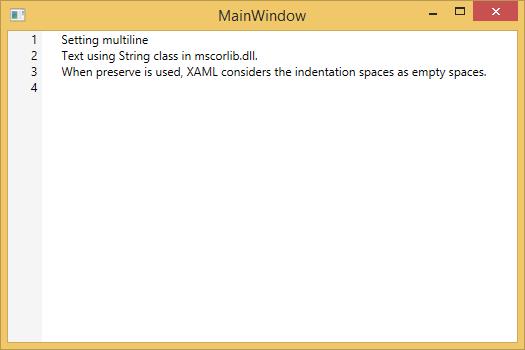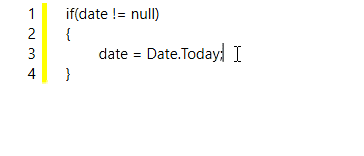Editing Text in EditControl WPF
15 Jul 20223 minutes to read
EditControl supports displaying or editing string values with any number of lines. It also supports all basic editing operations such as typing, cut, copy, paste, delete, backspace, undo and redo operations.
EditControl supports performing edit operations through keyboard and mouse. It supports shortcut keys for basic editing operations such as cut, copy, paste, undo and redo operations. EditControl also has a built-in context menu to perform common editing operations such undo, redo, cut, copy, paste, select all operations using mouse. User can enable/ disable the built- in context menu. For more information refer to Default Context Menu.
Text property of the EditControl contains the text available in the EditControl at any point of time. The Text property of EditControl gets updated when you edit the text in the control by typing, editing the text by cut, paste, delete, undo or redo operations or by setting the Text property exclusively at runtime. The TextChanged event of EditControl gets raised when the Text property gets changed. Refer to EditControl Events section to know more about TextChanged and other events available in EditControl.
Set a simple string as EditControl’s Text by using the following line of code.
<syncfusion:EditControl x:Name="editControl" Text="This is Syncfusion's EditControl"/>editControl.Text = "Setting Text property from code behind (C#)";To set a multi-line string as Text property through XAML, String class in mscorlib.dll can be used with xml:space=”preserve”. The following lines of code can be used to set a multiline text from XAML.
<syncfusion:EditControl x:Name="editControl">
<library:String xml:space="preserve" xmlns:library="clr-namespace:System;assembly=mscorlib">Setting multiline
Text using String class in mscorlib.dll.
When preserve is used, XAML considers the indentation spaces as empty spaces.
</library:String>
</syncfusion:EditControl>
editControl.Text = @"Setting multi-line text" + Environment.NewLine + "from C# using" + Environment.NewLine + "Environment.NewLine.";
Indentation in EditControl
EditControl allows to auto indent the text when enter key pressed to add new lines. Auto indentation can be enabled by setting IsAutoIndentationEnabled to ‘true’. Auto indentation works based on IndentingOptions property which has following options,
- None - When ENTER key is pressed, edit cursor will move to beginning of the next line.

- Block - When ENTER key is pressed, edit cursor will move to next line with same indentation of current line.

- Smart - When ENTER key is pressed, edit cursor will move to next line with one tab space.

<syncfusion:EditControl Name="Edit1" Background="White" Margin="0" IsAutoIndentationEnabled="True" IndentingOptions="Smart" Foreground="Black" />EditControl editControl = new EditControl() {IsAutoIndentationEnabled = true, Height = 200, Width = 200, Background = Brushes.White, Foreground = Brushes.Black };
editControl.IndentingOptions = IndentingOptions.Smart;TabSpaces in EditControl
EditControl supports for changing the number of empty spaces to be added for singe Tab key press by setting TabSpaces property. The default value is 4.
<syncfusion:EditControl Name="Edit1" Background="White" Margin="0" IsAutoIndentationEnabled="True" TabSpaces="10" IndentingOptions="Smart" Foreground="Black" ShowLineNumber="True" />EditControl editControl = new EditControl() {Height = 200, Width = 200, Background = Brushes.White, Foreground = Brushes.Black };
editControl.TabSpaces = 10;